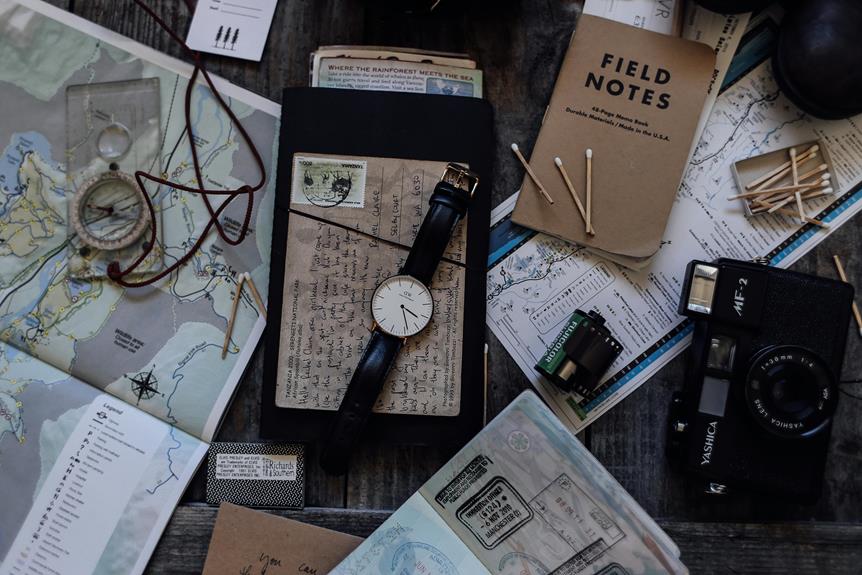
Master the basics of camera settings to unleash your photography potential. Adjust aperture to control light and depth of field, play with shutter speed for sharpness or motion blur, and understand ISO for different lighting conditions. By grasping these concepts, you'll be on your way to capturing stunning images with creative control. Gain confidence in your photography skills by exploring these fundamental settings further.
Importance of Camera Settings
Why are camera settings crucial for capturing the best photos?
Well, getting your camera settings right is like having the key to unlock the full potential of your photography. By understanding and mastering your camera settings, you can control crucial elements such as exposure, focus, and white balance, which are essential for creating stunning images. Adjusting settings like ISO, shutter speed, and aperture allows you to adapt to different lighting conditions and subjects, ensuring your photos turn out just the way you want them to.
When you take the time to learn about your camera settings, you gain more creative control over your shots. You can experiment with different settings to achieve various effects, whether you want to capture a fast-moving subject with a sharp focus or create a dreamy, blurred background in your portraits. By paying attention to your camera settings, you can elevate your photography skills and produce images that truly stand out.
Mastering Aperture
To truly enhance your photography skills, delve into mastering aperture settings on your camera. Aperture refers to the opening in your lens through which light passes. Understanding how aperture works is crucial as it not only controls the amount of light entering your camera but also affects the depth of field in your photos.
Aperture is measured in f-stops, with lower f-stop numbers like f/1.8 letting in more light and creating a shallower depth of field, perfect for portraits where the background is blurred. On the other hand, higher f-stop numbers like f/16 allow less light and result in a larger depth of field, ideal for landscape shots where you want everything in focus.
Experimenting with different aperture settings will help you grasp how it impacts your photos. Take shots using various f-stop values to see the differences in sharpness and background blur. Mastering aperture is a fundamental aspect of photography that can truly elevate your images.
Nailing Shutter Speed
Understanding shutter speed is essential for capturing sharp and dynamic photographs. Shutter speed refers to the amount of time your camera's shutter remains open to allow light in. A faster shutter speed, like 1/500 or 1/1000 of a second, freezes motion and is perfect for capturing fast-moving subjects, such as sports or wildlife. On the other hand, a slower shutter speed, like 1/30 or 1 second, creates motion blur and works well for conveying a sense of movement in a photograph.
To nail your shutter speed, consider the lighting conditions and the effect you want to achieve. In bright light, you can use faster shutter speeds to prevent overexposure. In low light, a slower shutter speed coupled with a tripod can help you capture stunning night scenes without introducing too much noise. Remember, the rule of thumb is to use a shutter speed that's at least equal to the focal length of your lens to avoid camera shake.
Experimenting with different shutter speeds will help you understand how they affect the final image. So grab your camera, adjust your settings, and start capturing stunning photos with the perfect shutter speed for every situation.
Understanding ISO
Mastering ISO settings is crucial for achieving optimal exposure in your photographs. ISO measures the sensitivity of your camera's sensor to light. A lower ISO setting, such as 100 or 200, is ideal for shooting in bright conditions to produce sharp images with minimal noise. On the other hand, higher ISO settings like 800 or above are suitable for low light situations but may introduce grain or digital noise to your photos. Understanding how to adjust your camera's ISO setting allows you to adapt to various lighting conditions while maintaining image quality.
When shooting in bright daylight, keep your ISO low to capture crisp and clear photos. As the light diminishes, gradually increase your ISO to maintain proper exposure without overexposing your images. However, be cautious when raising your ISO too high, as it can result in a grainy or pixelated appearance. Experiment with different ISO settings in diverse lighting scenarios to grasp the impact it has on your final images. By mastering ISO, you can enhance your photography skills and capture stunning shots in any lighting conditions.
Conclusion
So there you have it – understanding camera settings is crucial for capturing the perfect shot.
By mastering aperture, nailing shutter speed, and understanding ISO, you can take your photography skills to the next level.
Don't be afraid to experiment with different settings and practice regularly to improve your photography skills.
Keep learning and exploring, and soon you'll be taking amazing photos like a pro!




